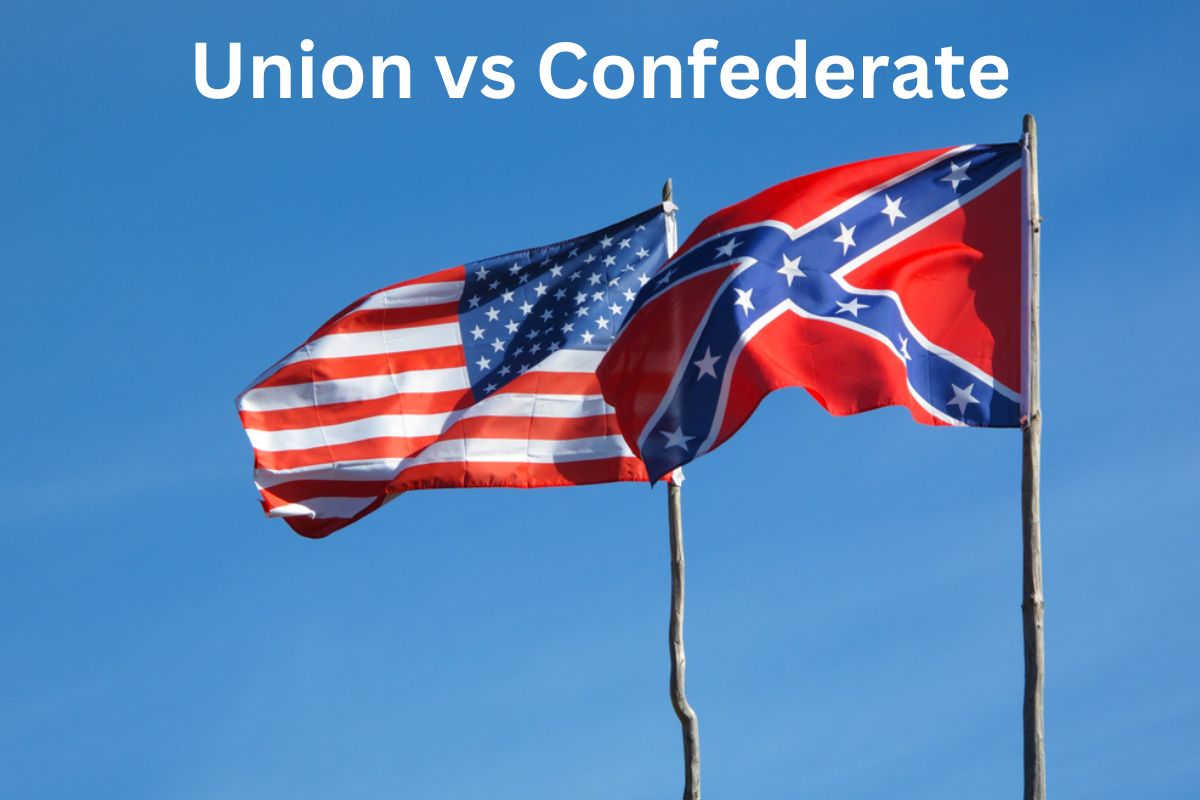The American Civil War, fought between 1861 and 1865, was a pivotal event in American history that shaped the country’s political, social, and economic landscape. The conflict was primarily fought between two opposing factions: the Union and the Confederacy.
The Union, also known as the North, was made up of states that remained loyal to the United States federal government.
The Confederacy, also known as the South, was made up of states that seceded from the Union to form their own government.
In this article, we will explore the differences between the Union and the Confederacy, including their ideologies, key figures, military strategies, and legacies.
By understanding these differences, we can gain a deeper appreciation for the lasting impact of the Civil War on American society and politics.
| Aspect | Union (North) | Confederacy (South) |
|---|---|---|
| Purpose and Goals | Aimed to preserve the United States and abolish slavery | Sought to secede from the United States and preserve slavery |
| Geography | Northern states including New York, Pennsylvania, Ohio, etc. | Southern states such as South Carolina, Mississippi, etc. |
| Leadership | Led by President Abraham Lincoln | Led by President Jefferson Davis, VP Alexander H. Stephens |
| Military Strength | Larger population, greater industrial capacity | Smaller population, less industrial capacity |
| Economy | Diverse economy including industry, agriculture, commerce | Relied heavily on agriculture, lacked industrial base |
| Slavery | Initially fought to preserve the Union, later Emancipation Proclamation abolished slavery in Confederate-held territory | Integral to the economy and society, preservation a key motivation for secession |
Union vs Confederate
The Union was generally more industrialized, opposed to slavery, and supported a stronger central authority. The Confederacy, on the other hand, advocated for the rights of individual states, supported slavery, and built its economy on mostly agriculture.
The Union
The Union was formed by states that remained loyal to the United States federal government and rejected the Confederacy’s attempt at secession.
The Union was led by President Abraham Lincoln, who was determined to preserve the Union and end slavery. The Union’s ideology was grounded in the belief that the United States was one indivisible nation, and that secession was unconstitutional.

The Union’s military strategy was based on a combination of naval blockades, strategic advances, and overwhelming force. Some of the key figures and leaders of the Union included:
- Ulysses S. Grant
- William Tecumseh Sherman
- George B. McClellan
The Union’s military campaigns were largely successful, with key victories at the battles of:
- Antietam
- Gettysburg
- Vicksburg
The Union’s victory in the Civil War ultimately led to the abolition of slavery and the reunification of the United States.
However, the cost of the war was high, with an estimated 620,000 soldiers losing their lives. The legacy of the Union is one of resilience, determination, and a commitment to the values of democracy and freedom.
The Confederacy
The Confederacy was formed by states that seceded from the United States federal government, citing states’ rights and opposition to the abolition of slavery.
The Confederacy was led by President Jefferson Davis, who sought to establish a separate nation based on the principles of states’ rights, limited government, and the preservation of slavery.

The Confederacy’s military strategy was based on defensive warfare, with the aim of wearing down the Union’s superior numbers and resources. Some of the key figures and leaders of the Confederacy included:
- Robert E. Lee
- Stonewall Jackson
- Nathan Bedford Forrest
The Confederacy experienced some early military successes, with key victories at the battles of:
- Bull Run
- Fredericksburg
However, as the war dragged on, the Confederacy was increasingly hampered by shortages of men and resources.
The Union’s naval blockade severely restricted the Confederacy’s ability to trade and import supplies, and the Confederacy struggled to maintain morale and discipline among its troops. The Confederacy ultimately surrendered to the Union in 1865, with the end of the Civil War resulting in the abolition of slavery and the reintegration of the Confederate states into the United States.
The legacy of the Confederacy is one of controversy and division. While some see the Confederacy as a symbol of states’ rights and resistance to federal authority, others view it as a symbol of racism, oppression, and division.
The use of Confederate symbols and monuments remains a highly contentious issue in American society today.
Differences Between the Union and Confederacy
The Union and Confederacy differed in a number of key ways, including their economic and social structures, political ideologies, and military strategies.
Economic and social differences: The Union was primarily an industrialized economy with a focus on manufacturing, while the Confederacy was largely an agrarian economy with a focus on cotton production.
This economic difference contributed to a social difference in the role of slavery, which was an integral part of the Southern economy. In contrast, the Union had already abolished slavery in many states and was moving towards the abolition of slavery throughout the country.
Political differences: The Union was characterized by a strong federal government with a centralized authority, while the Confederacy was characterized by a weaker central government and greater emphasis on state sovereignty. The Union also had a more democratic political structure, with a larger percentage of the population able to participate in elections.

Military strategy and tactics: The Union’s military strategy was based on a combination of naval blockades, strategic advances, and overwhelming force. In contrast, the Confederacy’s military strategy was based on defensive warfare, with the aim of wearing down the Union’s superior numbers and resources. The Confederacy also relied heavily on cavalry raids and guerrilla tactics.
Overall, the Union and Confederacy represented two vastly different visions for the future of the United States. The Union sought to preserve the country and promote democratic values, while the Confederacy sought to establish a separate nation based on the principles of state sovereignty and slavery.
The outcome of the Civil War ultimately resulted in the victory of the Union’s vision for the country.
Legacy of the Union and Confederacy
The legacy of the Union and Confederacy is a complex and contentious issue in American society. On the one hand, the Union’s victory in the Civil War led to the abolition of slavery, the reunification of the country, and the strengthening of the federal government.
This legacy is one of resilience, determination, and a commitment to the values of democracy and freedom.
On the other hand, the legacy of the Confederacy is one of controversy and division. The Confederacy was founded on the principles of states’ rights, limited government, and the preservation of slavery, which are values that are deeply at odds with the principles of democracy and freedom.
The use of Confederate symbols and monuments remains a highly contentious issue in American society, with some viewing these symbols as a celebration of racism and oppression, while others view them as an important part of Southern heritage.
The legacy of the Civil War has also had a significant impact on American society and politics. The Civil War marked a turning point in American history, with the United States emerging as a more powerful and centralized nation.
The conflict also laid the foundation for the civil rights movement, which sought to address the ongoing legacy of slavery and racism in American society. The legacy of the Union and Confederacy is therefore a complex and ongoing issue, with a continuing impact on American society and politics today.
Conclusion
The differences between the Union and Confederacy were rooted in fundamental economic, social, and political differences that ultimately led to the American Civil War.
While the Union sought to preserve the United States and promote democratic values, the Confederacy sought to establish a separate nation based on the principles of states’ rights and the preservation of slavery.
The Union’s victory in the Civil War ultimately led to the abolition of slavery, the reunification of the country, and the strengthening of the federal government. However, the legacy of the Confederacy remains a highly contentious issue in American society, with ongoing debates surrounding the use of Confederate symbols and monuments.
By understanding the differences between the Union and Confederacy, we can gain a deeper appreciation for the lasting impact of the Civil War on American society and politics.
